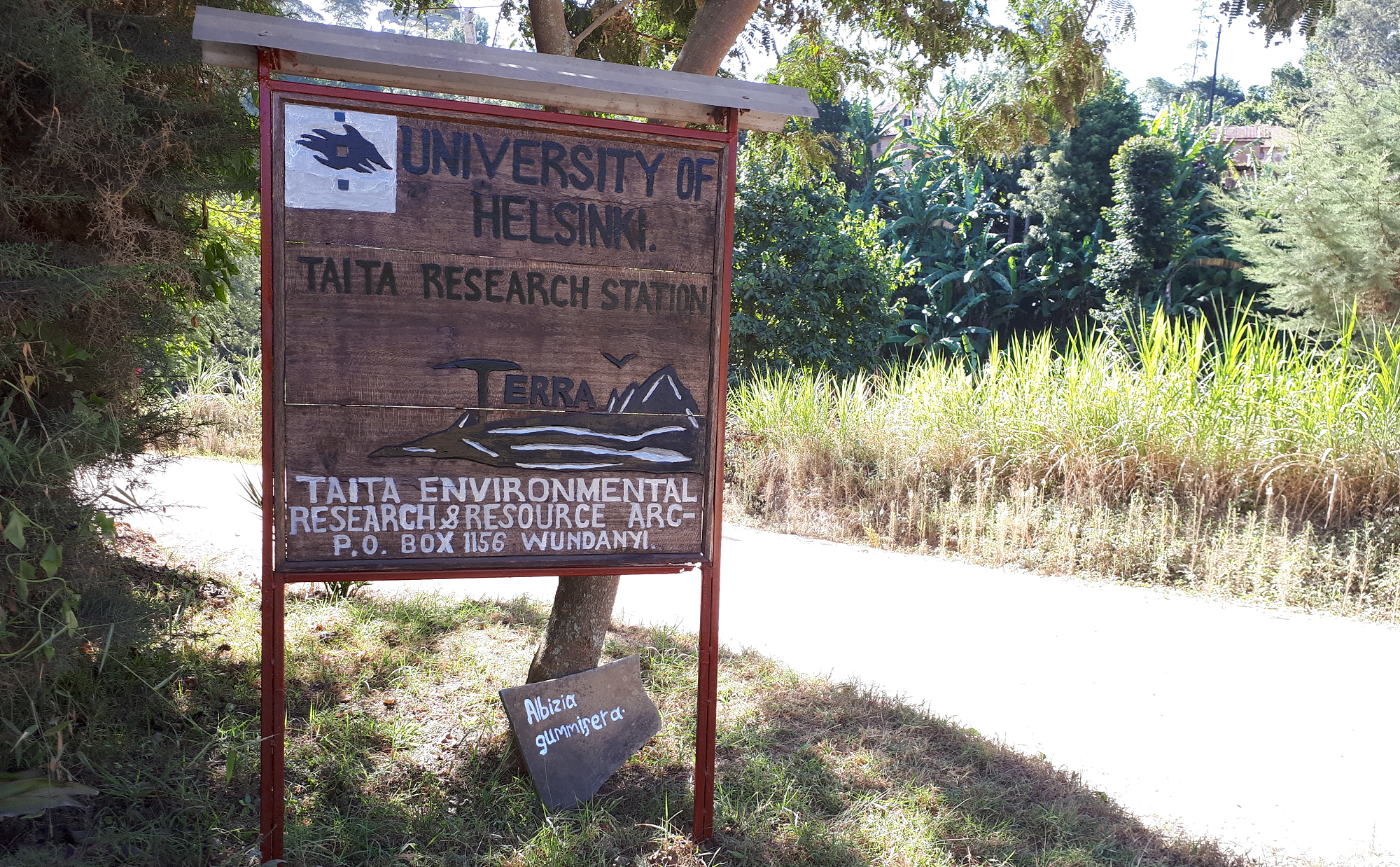Today we had a small introduction to participatory GIS (P-GIS). The main idea is to apply GIS methods without digital devices and report the results back to the community so that the people have access to the data. We will shortly clarify the methodological background behind P-GIS, experiences from the practical exercise and the main results.
Participatory research has evolved during the last decades. It started in 1970’s called as ‘Rapid Rural Appraisal’. The main idea was to question positivist perspectives to field research that included top-down approach. The scientists aimed to abandon preformulated questions and tried to learn from locals instead. This represented the general change in development thinking in the field of geography. In the 1980’s the focus turned more into methods, attitudes, behaviour and sharing. The focus was more in the local interests and they were more involved in control, use and analysis of the research data. Importantly, facilitators were in charge of conducting the field research that had not been self-evident in the previous decades. In order to understand the research situation holistically, the focus turned also into gender, power and other socio-economic factors. In the 1990’s perspective turned from rural to more general concept, hence the name ‘Participatory Learning and Action’. The new focus was to emphasize the awareness of the community instead of amount of information. PRA is considered as a tool for change, empowerment and increasing awareness and skills. Ideally, P-GIS is a way to break the language barriers between academics and locals for the phenomena that cannot be studied otherwise.
The aim of the practical exercise was to spatialize cozy places and unpleasant places in Wundanyi area. The target groups were adult women aged 18-50, adult men aged 18-50, elderly women over 50 years old and elderly men over 50 years old. Each student group interviewed one participant group so that both groups interviewing men had at least one male member. Participants were asked to identify locations, which they found pleasant and unpleasant either as points or polygons on the orthographic map. Each group interviewed ten persons individually so that every target group was represented. Interviews were combined together as per target group to represent the experiences and views about Wundanyi town. Produced maps will be placed in the local library so that everyone will have access to them. After the interviews the results were discussed and presented for the student groups.
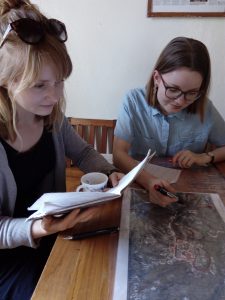
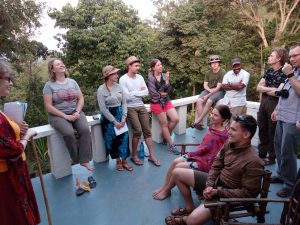
Women aged 18-50
The main finding was that women aged 18-50 found social places such as market place and football field the most pleasant because of the possibility to meet family and friends. The second most pleasant places were workplaces and also the importance of climate and nature was mentioned. As for the unpleasant places, people were significantly more reluctant to talk about them but rather Wundanyi was considered as a perfect place for living. Only two women mentioned hot places and too crowded football field as unpleasant. After some interviews, it was brought out that women do not go to the center in the evening or in the night time at all so the time was a relevant factor.
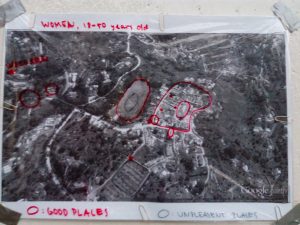
Elderly women over 50 years
Elderly women found homes to be the most comfortable places. They also enjoyed market places, church and some other practical places. Market place was also mentioned as unpleasant place because of the noise. Otherwise elderly women were reluctant to mention any unpleasant places.
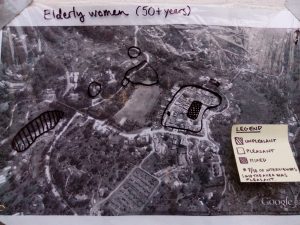
Men aged 18-50
Young men liked the places where one can hang around such as the market, football field, gas station and bus station. They also appreciated climate and green nature. As bad places they mentioned sanitary and sewage problems around the town and a place known for drug usage.
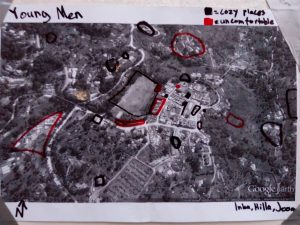
Elderly men over 50 years old
Elderly men appreciated forests and hills more over market places. They praised Wundayi for its climate and nature and possibility to get whatever one needs. Homes, hotels and working places were also mentioned as good places. Football field was also seen as a political place for big gatherings. In line with other responses, also elderly men fund Wundayi as a good place for living. For elderly men the map was the most interesting part of the interview event though they were the only group that did not want to draw on the map.
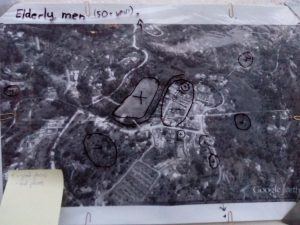
As a conclusion some general aspects common for every target group were language barriers, hospitality bias and a lack of map reading skills. The lack of English skills of some respondents caused challenges in communication. Unwillingness to mention any bad places could be explained as hospitality bias that refers to peoples’ politeness to only discuss positives aspects of Wundayi. Some respondents found it difficult to orientate and read the black and white map. Also, the student groups’ unawareness of the area hindered the ability to locate some of the mentioned places.
The empowering participatory aspect of P-GIS allows a stronger engagement with the topic in hand. At the end, all the students enjoyed the exercise and agreed on the important perspectives that P-GIS has to offer.
Anni & Maiju
